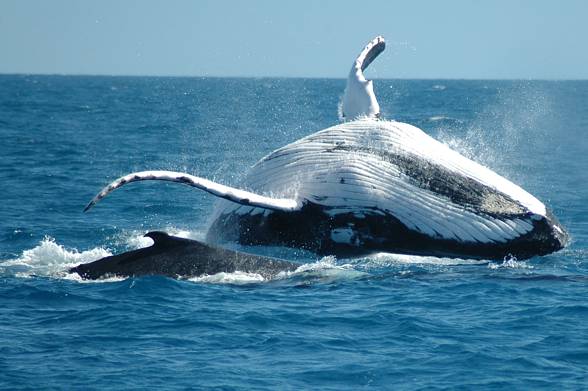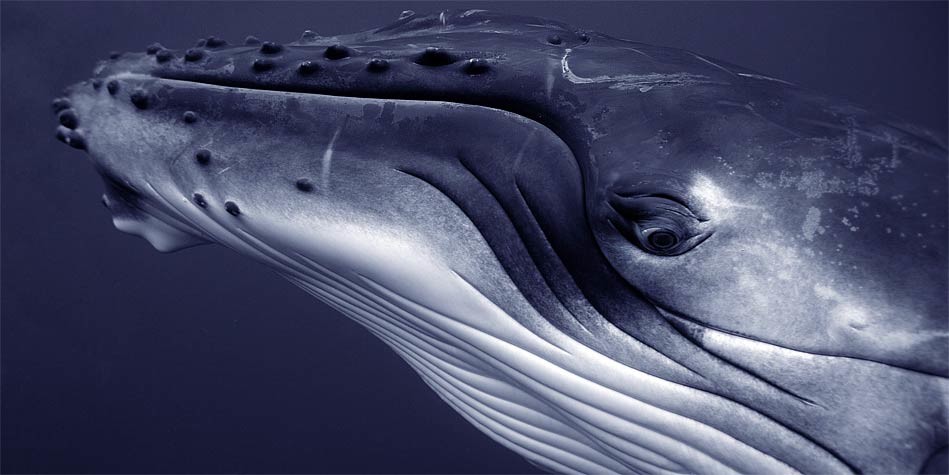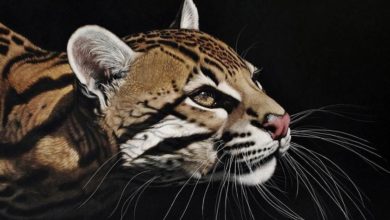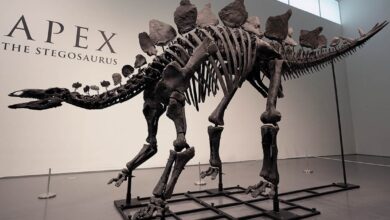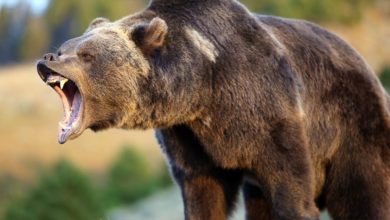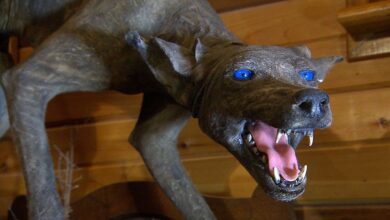Humpback whale (Megaptera novaenagliae)
The most lonesome whale
Pectoral fins comparable to paddles and a magnificent tail, with a pattern unique for every individual, make humpbacks one of the most recognizable marine animal. A widespread species, far from being endangered with extinction is a singing inhabitant of every ocean and several seas.
Classification
- Class: Mammalia
- Order: Cetartiodactyla
- Family: Balaenopteridae
- Genus: Megaptera
- Species: Megaptera novaeangliae
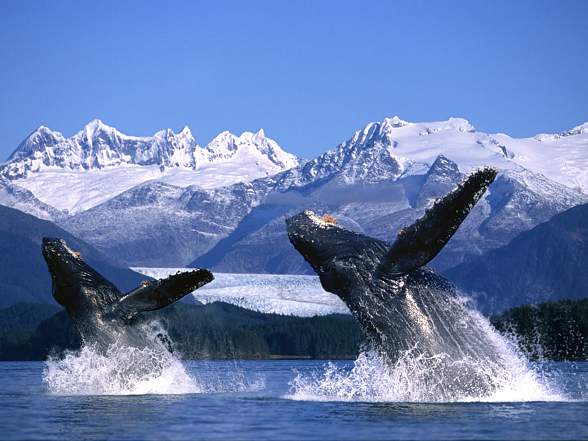
Areas of occurrence
Humpbacks are present in every ocean and several seas, yet the whole population was divided into 4 subpopulations:
- Atlantic
- North Pacific
- South Pacific
- Indian
The first three humpback subpopulations migrate in the Atlantic and Pacific areas. The inhabitants of the Indian Ocean do not migrate for they are bound by Asia (north side), Antarctica (south), Australia and the Philippines (east) and Africa (west).
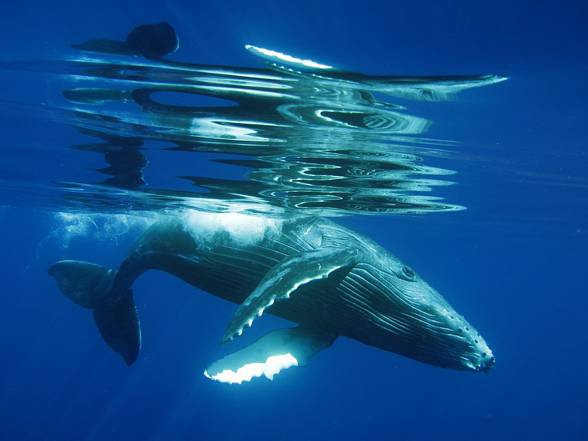
Characteristics
Appearance
It has a distinctive stocky body shape combined with a visible hump. Its dorsal coloration is dark and muddy. Characteristic lumps called tubercles are spread all over the head and jaw (a distant recollection of hair follicles). Their blowholes consist of two parts and open at the same time through muscle contractions. When a humpback exhales, it is performed with such a power that the air coming from the lungs is instantaneously condensed upon contact with the cold atmospheric air. Such a spurt might be even 3 meters (9ft 10in) high.
Fins
The tail fin is wide, symmetric, heart-shaped and covered in linear grooves. Its top is black, while the bottom is white. Every humpback has a unique pattern on the bottom side of the tail fin, which allows observers to recognize certain animals.
Humpback has the longest pectoral fins of all whales. There are several possible explanations for these fins’ enormity.
As compared to the body size and lengths of other fins, the dorsal fin is relatively small – triangular shaped. It is visible during leaps over the water surface.
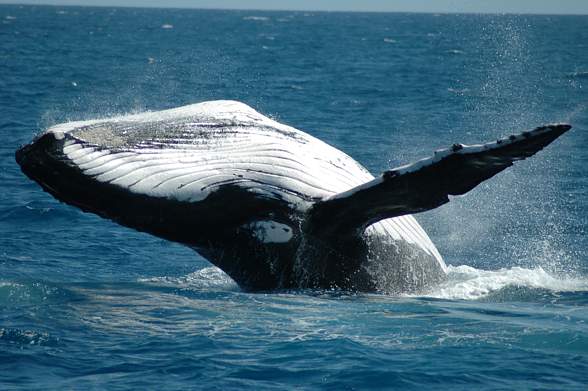
Baleen
The humpback`s jaw is equipped with dark baleen plates. Front plates are about 45 cm (1ft 5.7in) long, while the plate in the back of the whale`s jaw may even have a length of 90 cm (2ft 11in). They allow the animal to filter water, which results in draining the plankton off inside its mouth. There may be 270 – 400 baleen plates in the humpback`s mouth.
Sexual dimorphism and scars
A female humpback has a hemispherical lobe ca. 15 cm (6 in) in diameter, located in its genital area., which allows males to distinguish females from below. Male penis is normally hidden in a designated skin fold, while their heads and backs are full of scars – a reminiscence of fights with larger rivals.

Diet in relation to habitat
Humpback is characteristic for its extraordinary dietary habits – it eats only during summer, using up its subcutaneous fat reserves in the winter. In this season it eats very rarely, mostly acquires food passively. Humpback whales from the north Atlantic areas feed on krill and small fish: mackerels, Atlantic herrings, Atlantic salmons, haddocks, capelins and American sand lances.
Humpbacks of the northern Pacific Ocean areas eat Atka mackerels, Pacific sand lances, Pacific cods, Alaska pollocks, Arctic cods, saffron cods and rose fish. They also feed on various invertebrates.
Humpbacks inhabiting the New Zealand and Australia region especially like krill, bongas, amphipods and copepods.

Hunting tactics
The easiest method of acquiring food involves hunting in cooperation (6 to 14 whales form a group, sometimes only 2 or 3 in case of hunting shoaling fish). They can also lead a direct attack, surrounding the whole shoal and stun their prey with tail whips. It also can eat owing to baleen plates, yet this method is more compound than in case of other whales.
In cooperation, the humpbacks encircle fish from below and from sides. They gradually tighten the circle. Several group members confuse the shoal, leaping above the water surface, splashing their tails afterwards. One whale dives deep and exhales, so that the air bubbles push the fish closer to the surface. Then a direct attack takes place.
One of the most sophisticated hunting techniques is stunning the fish with low frequency sounds.
Humpbacks do not have natural enemies, yet young whales are often a hunting target for killer whales (orcas).
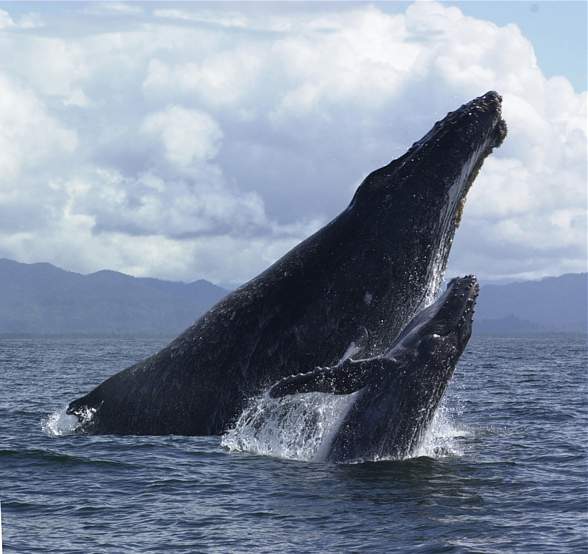
Water songs
Humpbacks (both males and females) emit unique sounds. The male ‘call sign’ is based on very loud and long sound sequences, called songs. Every song is composed of low frequency sounds, changing its pitch and amplitude. One song may be up to 20 minutes long, but there is a record of males singing 24 hours straight, interrupted only by drawing breaths. It is worth mentioning that humpbacks have no vocal cords, their songs are generated solely by exhaling through giant blowholes.
Every subpopulation has its own set of songs, which evolve due to migration – whales form the north move southward and vice versa. New sounds are ‘taken up’ from the encountered groups, with which the newcomers eagerly communicate.
The purpose of those songs has not yet been established. It had been commonly believed that sounds emitted by males are a form of courtship, yet it was discovered that these messages are also answered by other males. Therefore it is accepted that this mean of communication helps establishing the hierarchy of male whales in a certain area. As it was already mentioned, the humpback uses its low frequency sound waves during hunting to cause confusion among its prey.
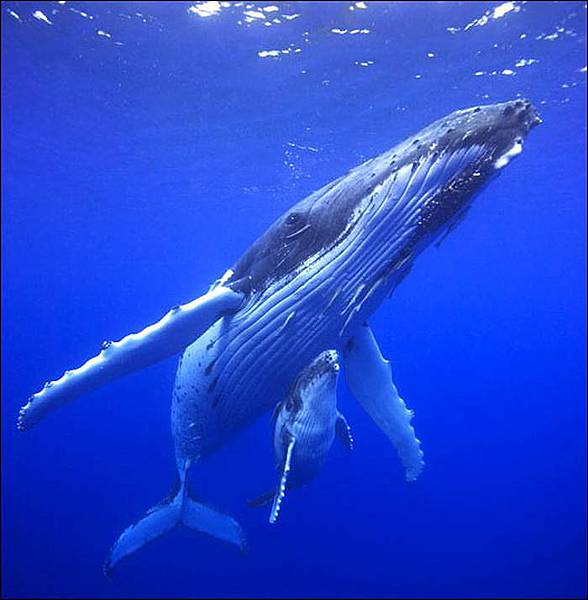
Character and social structure
Humpback is rather a solitary, sometimes it lives in small, transient groups, lasting only a few hours. These mammals prefer company mostly in the summer season. The group`s aim is to hunt for fish shoals and crustaceans. The most durable bonds link the females and its babies.
In spite of inhabiting the same areas that its cetacean cousins, the humpbacks do not show any interspecies activity whatsoever. The sole exception is the Hawaiian area, where young humpbacks often swim alongside bottlenose dolphins (Tursiops truncatus).

Mating and breeding
Humpbacks are trying to woo their potential partners during winter, migrating to the equatorial regions. Moreover, a male can show interest in a pregnant female or even already a mother. Packs of 20 to 30 males surround the female or a small group of females, presenting their skills: they leap above the water surface and splash their tails. Such presentations may last even a few hours, for the rejected males are soon replaced by new wooers.
Pregnancy lasts over 11 months, and a female gives birth approximately every 2 – 3 years. Whales are viviparous, the newborns are up to 6 meters long (the size of the baby depends on the size of its mother) and may weigh even 2 tons. The baby whales are born tail-forward, which protects its lungs from water.
The fins of a young humpback are still soft-structured, which makes it a clumsy swimmer – it benefits from mother`s help in moving around.
The first goal after being born is to swim up to the surface to draw a first breath. The baby whale has an excellent sight and hearing abilities. It is breast-fed for about 6 months, during the next 6 months it eats autonomously. After 11 months of age the young start swimming with the adults during hunting, to learn how to acquire food with the help of exhaling the air bubbles near its prey. They become experts on the matter after reaching 2 years of age. They are fully independent around the age of 4.
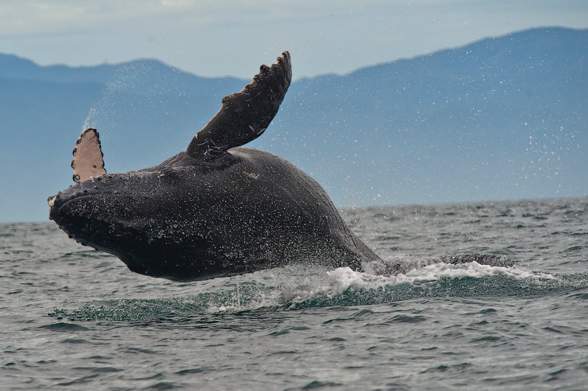
Detailed characteristic / size
Humpback whale (Megaptera novaeangliae)
- Length: males: 13 – 14 m (42ft 8in – 45ft 11in), longest recorded – 19 m (62ft 4in); females 15 – 17 m (49ft 3in – 55ft 9in), longest recorded (unconfirmed, doubtful) – 27 m (88ft 7in)
- Weight: 25 – 30 tons; largest over 40 tons; heaviest recorded – female: 90 tons (unconfirmed, doubtful)
- Length of pectoral fins: up to 6 m (19ft 8in) each
- Width of the tail fin: 2 – 3 m (6ft 7in – 9ft 10in)
- Lifespan: 45 – 100 years, although recent studies show that they can live up to 200 years. The record was confirmed by the amino acids analysis – 211 years.
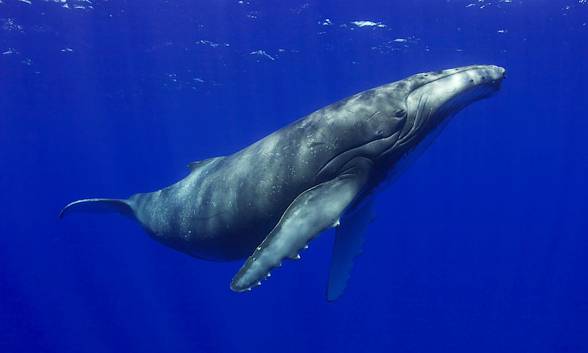
Humpbacks – interesting facts
- Humpback`s milk is pink and contains 50% fat.
- Humpback`s population is estimated to be around 80 thousand whales.
- Humpbacks were also seen in the Baltic Sea.
- It is not uncommon for even 40 males at once trying to win the favors of a single female.
- Humpback can create its distinctive sounds without exhaling the air. Assumingly, the air circles inside its head, generating a resonance of certain organs.
- One humpback whale can eat a few thousand fish during a single hunt.
- Humpbacks leap even 3 meters above the water surface, yet the most skilled ones often perform 6-meter jumps.
- The patterns on the bottom of its tail fin are equivalent to human fingerprints.
- There are many theories about the length of its pectoral fins, although none has been confirmed yet.
- Conceivably, humpback females form life-lasting mutual bonds.
- 6-centimeter, white-shelled Balanus crustaceans are humpback`s inseparable companions. They hook up in the cephalic and pectoral areas. They are generally harmless, though they can cause the whale`s thick skin to irritate. A single humpback can carry up to 500 kg of these creatures.
- Humpbacks draw interest and become a true attraction in their natural habitat. Special cruises are being organized in order to observe their leaps and other fascinating behaviors of these beautiful animals.
